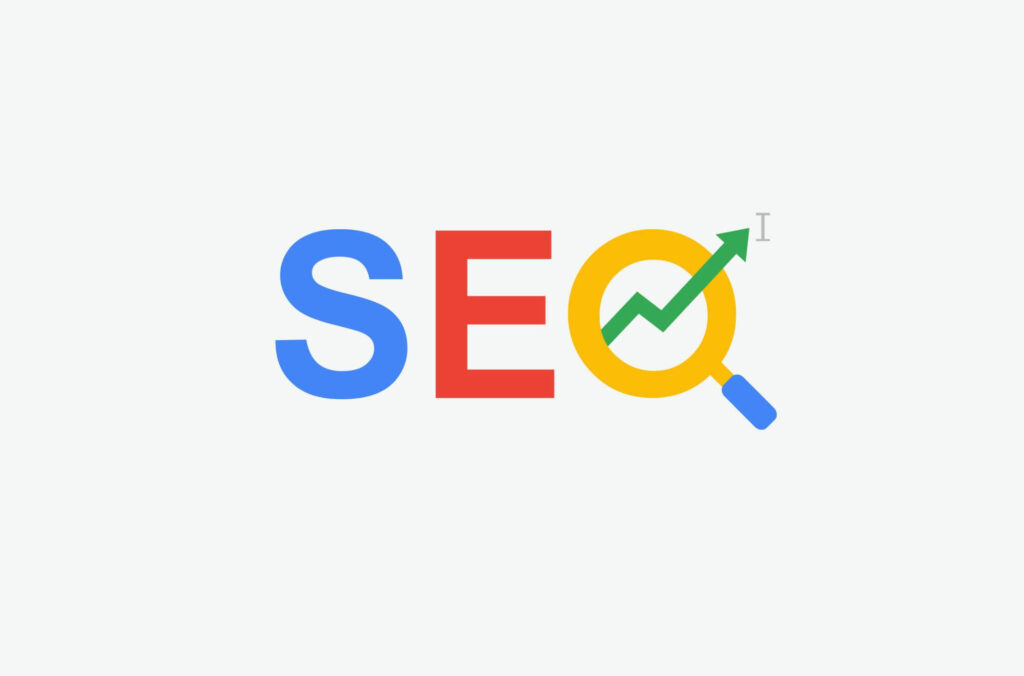In the e-commerce business, it becomes difficult to stand out differently with the ever-increasing, neck-to-neck competition. Apart from paying huge amounts for ads, it is important to think for the long run to stay alive and become dominant in the industry. Ranking organically needs a lot of effort to reach the targeted audience that will boost your sales.
Let us See how we can grow more profits in a lucrative and productive way that will help to acquire a reputable place in the market with Best SEO Practices.
What is SEO?
SEO is the process of optimising the website by making it visible and ranking on top of Search Engine Result Pages (SERP) to attain the desired business goal i.e. generating leads and sales organically.
What is e-commerce SEO?
E-commerce SEO involves using different SEO techniques to optimise the website to make it visible and rank on the organic search results of SERP to drive more traffic that will lead to more organic sales.
Why is SEO important for e-commerce business?
The primary goal of an e-commerce business is more than just ranking on top of Google or any other search engine’s result pages. In e-commerce business, we have to focus on how we can reach the targeted audience to attract more organic traffic that has a high conversion rate to attain the business goal of accomplishing the target of sales.
In this context, an E-commerce SEO can help to attain the desired business goals most cost-effectively and organically using White-hat SEO techniques that can help in reducing bounce rate, high conversion rate, creating brand awareness, and many more.
In this blog, we shall see how to optimise your e-commerce website to drive more traffic and sales.
Section 1: SEO Audit
SEO Audit is the process of studying and analysing your business websites to understand where your business stands, what are the loopholes in the website (technical and others), what are the reasons that lead to high bounce rates, what are the reasons for low conversion rates, traffic analysis, what is the current user-engagement rate to plan the strategies for conducting effective SEO campaigns.
By using Google Analytics (GA4) and Google Search Console we can get information on the demographics, traffic analysis, user behaviour, etc
Section 2: Competitors Analysis
In the realm of vast e-commerce business, we are not the single player competing to rank on SERP. Competition analysis helps to determine who our competitors are, among all who are the top rivals, what is the current position of our business, what are their strategies of business and by what means we can beat them.
Section 3: On-page SEO checklist
Step 1: Buyer Intent keywords research
Focusing more on buyer’s Intent keywords like information-based keywords, commercial keywords and transactional keywords will help us to sell more products.
Other than that, LSI (Latent Semantic Indexing) keywords and not to forget long-tailed keywords with low keyword difficulty and high search volume should be included on the website.
Step 2: Title and Description of the product page
The title and description are the first things that the audience notices on SERP. The title and description should be catchy and keywords optimised, giving the audience a basic crux about the page with Unique Selling Point (USP).
Give a unique and different title and description to every category and sub-category of product pages to avoid keyword cannibalization (two web pages competing to rank for the same keyword). It might be time-consuming but it can help avoid major issues in the future.
A glimpse of the product title and description is shown below.

Step 3: Optimising the URL string
The URL itself should be self-explanatory. In dynamic websites, the URL parameters or URL queries are the URL Slug that comes after the main URL. You should avoid the URL parameters and queries by optimising it by placing keywords and titles of the category and subcategory of the pages.
Step 4: Avoiding Canonicalization of the duplicate pages
When working on a dynamic website, the problem of generating duplicate pages can be a pain to work on. An E-commerce website has product filter options that can generate multiple duplicate pages in the website. So, to avoid search engines displaying these duplicate pages, giving a canonical tag in the HTML section of that particular category or sub-category page will be helpful.
Step 5: To Develop E-commerce website SEO-Friendly
Working on Site architecture helps increase the user engagement of the website. The internal linking of different categories, sub-categories and product pages should be done in such a manner that it will become easy for the user to interface and navigate the website.
The homepage should be the master page from where the users can get access to different web pages of the site.
Adding breadcrumbs to the product pages will make it easy to navigate to the different categories and sub-categories of the pages.
If we take the example of Women’s Fashion it should be done in the following manner

Step 6: Indexing of the Product Page
Without crawling and indexing it is impossible to rank on search engines. Adding an updated sitemap and robots.txt file from the Google Search Console will ensure the indexing of the pages and the possible issues occurring in them.
Step 7: The optimisation of the images of the products
Images play a crucial role in e-commerce websites as they can influence a user’s decision to purchase a product. However high-quality and big-size images can slow down the website speed. We have to optimise the image in such a way that it will reduce the size without compromising the quality.
To ensure a quick upload of your image, it’s essential to reduce its size significantly. For instance, cutting down the original image size of 1200* 900 pixels to 400*400 will reduce its size by more than half, thereby increasing its upload speed.
The other thing is giving alt-tag to the images so that whenever there are some technical problems at least the user can know what that image is about.
Step 8: The landing page of the products
When a user searches for a particular query on a search engine, webpages are ranked based on relevance. The landing page is the first page that the user will see when they search for the product. By optimizing your landing page with relevant keywords, effective call-to-actions, and other related products, you can increase user engagement and improve the conversion rate of your product.
Section 4: Technical SEO
Step 9: Website speed load time
The loading speed of your website is a crucial factor in search engine rankings. Additionally, it can affect user experience and determine whether they stay or leave your site. If your website takes too long to load, users may choose to visit your competitor’s site instead, leading to an increase in bounce rate and reducing conversions and sales.
Step 10: Mobile Responsive Website
Studies have shown that over 60% of website traffic comes from mobile devices. Besides, being one of the confirmed search engine ranking factors it also impacts the user behaviour of your website. Ensuring the UX and UI of the website are mobile-friendly will boost the organic traffic and user engagement of the website.
Step 11: Reviews of the Products & FAQs
Adding product reviews can boost sales by providing social proof that the product is in demand, and increasing buyer confidence.
Many questions appear in the minds of the people that can’t be included in the product descriptions. Adding FAQs will clear the doubts of the people so they will proceed to purchase the product.

As shown above, customer reviews can strongly impact buying a product.
Step 12: Product Schema
Product Schema is a structured data format that provides a detailed description of a product to search engines and other applications. By including this format on your website, you can not only provide a visual impact but also describe the product details in a way that can help buyers understand the product better. When potential buyers can see all the relevant information about a product, they are more likely to click through to your website and ultimately make a purchase. By implementing Product Schema, you can increase the chances of your products appearing in search results and boost your click-through rates and sales.
Step
Section 4: Off-page SEO
Step 13: Backlink
Backlinking can help generate online brand awareness of your product and business in general. A backlink from the other relevant websites of your niche will be mutually helpful.
For example, If the niche is in the fashion industry and you are specialising in clothes then a backlink from clothing accessories like handbags, footwear, and matching jewellery will be beneficial for you and you can return the help by placing their website links to yours.
Step 14: Content marketing
Content marketing is the backbone of any marketing strategy. It creates a bridge between the retailers to connect with their audiences. Through content marketing, we have to think out of the box and create content that not only helps to drive new traffic but also makes the existing customers visit and purchase the products again. Content Marketing for an E-commerce website can be done in
- Making a video of how-to-based (instruction)
- Blog Writing and Posting (Guides, new product launch, etc)
- Forums related to the questions and answers of the products
- Avoid thin and duplicate content without simply copy-pasting the product descriptions and blogs from the manufacturer and other websites.
Final Thoughts
Competing with well-established brands can be difficult but not impossible. Implementing the right SEO tactics and campaigns can flourish the business in the most cost-effective way and with high ROI.








